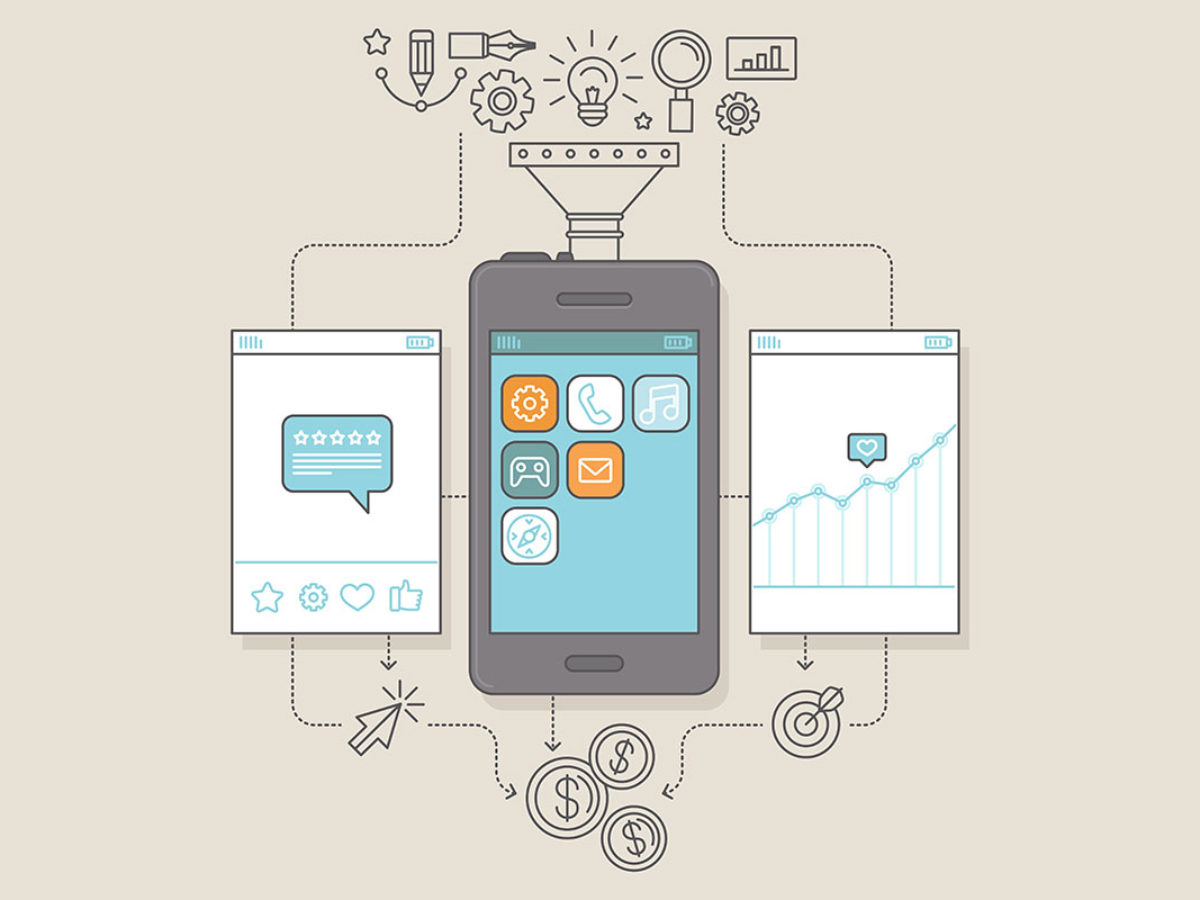You’ve probably wondered how app owners manage to make money from their creations. After all, it seems like so many apps are available for free, so how do these entrepreneurs generate revenue? In this article, we’ll explore various monetization strategies that app owners use to turn their passion projects into lucrative businesses. From in-app purchases and advertisements to subscription models and sponsorships, we’ll uncover the secrets behind the financial success of app owners in today’s digital age.
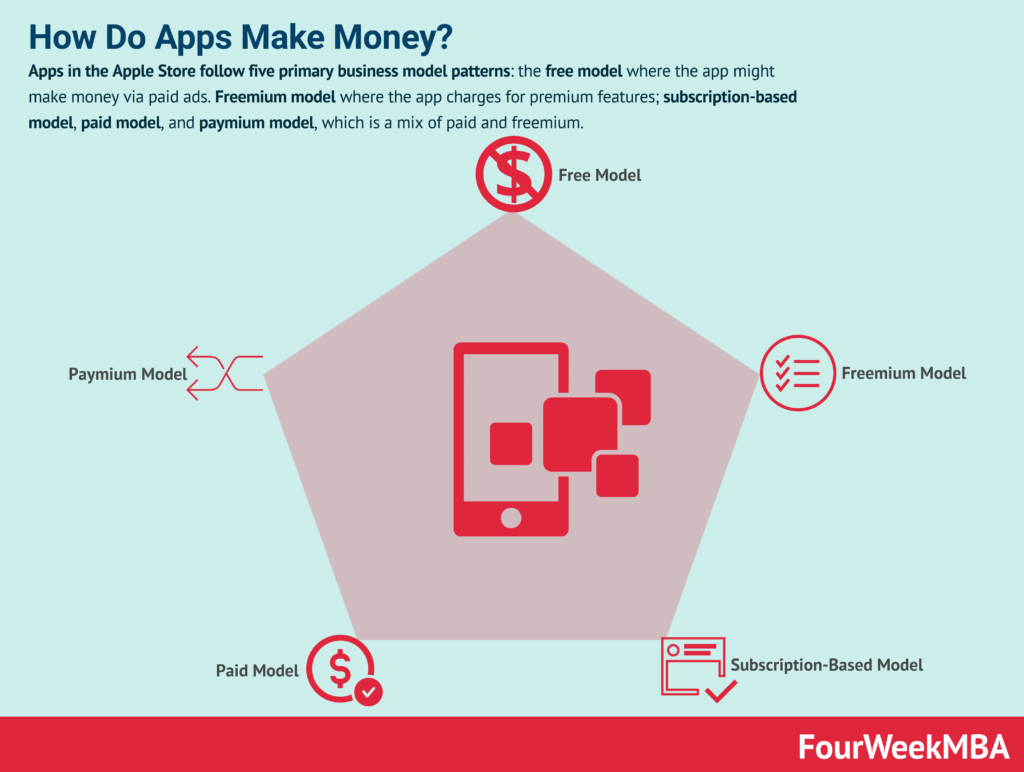
This image is property of fourweekmba.com.
1. In-App Purchases
1.1. What are in-app purchases?
In-app purchases refer to the ability for users to buy digital goods or services within a mobile application. These purchases are made within the app itself and can include items such as virtual currency, additional levels or features, subscription upgrades, or premium content. In-app purchases provide a way for app owners to monetize their apps beyond the initial download.
1.2. Types of in-app purchases
There are different types of in-app purchases that app owners can offer to their users. One common type is consumable purchases, where users buy items that can be used up or consumed within the app, such as extra lives in a game. Non-consumable purchases, on the other hand, are items that users buy once and can access indefinitely, like removing ads or unlocking a premium version of the app. Another type is subscription purchases, where users pay a recurring fee to access premium content or features for a specific period of time.
1.3. Advantages of in-app purchases
In-app purchases offer several advantages for both app owners and users. For app owners, it provides a sustainable revenue stream that can continue even after the initial download. By offering additional content or features for purchase, app owners can increase user engagement and retention, leading to higher revenue potential. For users, in-app purchases allow them to customize their app experience and access exclusive content, enhancing their overall satisfaction with the app.
1.4. Examples of successful in-app purchase monetization
There have been numerous successful examples of apps using in-app purchases to generate significant revenue. One notable example is Candy Crush Saga, a popular mobile game that offers users the option to purchase extra lives, boosters, and special features. Another example is the dating app Tinder, which allows users to buy premium features like “Super Like” or the ability to undo a swipe. These examples showcase how in-app purchases can be effectively implemented to drive revenue and enhance the user experience.
2. Advertising
2.1. Types of advertising in apps
Advertising within apps can take various forms, depending on the app’s genre and target audience. Common types of advertising in apps include banner ads, interstitial ads (full-screen ads displayed between app screens), rewarded video ads (users watch a video in exchange for in-app rewards), and native ads (advertisements seamlessly integrated into the app’s content). Each type of advertising offers different benefits and considerations for app owners.
2.2. Ad formats and placements
Ad formats and placements play a crucial role in the effectiveness of app advertising. App owners must carefully consider where and how ads are displayed within the app to maximize user engagement and revenue potential. Placements such as the top or bottom of the screen, between levels or sections, or as part of a natural break in the app’s flow can greatly impact the user’s experience. Additionally, considering the size and design of ads is essential to ensure they are aesthetically pleasing and not intrusive.
2.3. Ad networks and monetization platforms
To effectively monetize through advertising, app owners often partner with ad networks and monetization platforms. These platforms connect app owners with advertisers, enabling them to serve ads within their apps. Examples of popular ad networks include Google AdMob, Facebook Audience Network, and Unity Ads. These networks provide app owners with tools to manage and optimize ad campaigns, measure performance, and increase revenue potential.
2.4. Strategies for maximizing ad revenue
There are several strategies that app owners can employ to maximize ad revenue. Firstly, segmenting users and displaying targeted ads based on their demographics, interests, and behavior can increase the likelihood of engagement and conversions. A/B testing different ad formats and placements can help identify the most effective combinations. Implementing ad mediation platforms can also optimize revenue by automatically selecting the highest-paying ads from multiple networks. Finally, regularly monitoring and optimizing ad performance metrics, such as click-through rates and eCPM (effective cost per thousand impressions), is crucial to continually improve revenue generation.
3. Subscription Model
3.1. Offering exclusive content or features
The subscription model involves offering users the ability to access exclusive content or features within the app for a recurring fee. App owners can provide ongoing value to users by regularly updating the app with new content or adding premium features that are only accessible to subscribers. Offering exclusive content or features helps incentivize users to subscribe and creates a sense of exclusivity, enhancing the app’s value proposition.
3.2. Different subscription options
App owners can offer different subscription options to cater to varying user preferences. These options can include different durations (e.g., monthly, quarterly, or annual subscriptions) and tiers (e.g., basic, premium, or VIP) with varying levels of access or benefits. By providing flexibility in subscription options, app owners can attract a wider range of users and tailor the offerings to meet different budgetary constraints or user preferences.
3.3. Pricing strategies
Developing effective pricing strategies is crucial for the success of the subscription model. App owners should carefully consider factors such as the app’s value proposition, target audience, competitive landscape, and desired revenue goals when determining the subscription prices. Pricing should strike a balance between affordability for users while generating sufficient revenue for the app owner. Implementing trial periods or introductory pricing can also help attract new subscribers and encourage them to continue their subscriptions.
3.4. Churn reduction techniques
Churn, or the rate at which subscribers cancel their subscriptions, is a key challenge in maintaining a successful subscription-based app monetization strategy. App owners can employ various techniques to reduce churn and retain subscribers. These can include providing regular updates and new content to keep users engaged, offering personalized recommendations or curated content based on user preferences, implementing loyalty programs or rewards for long-term subscribers, and actively seeking user feedback to address any pain points or issues.
4. Freemium Model
4.1. What is the freemium model?
The freemium model is a popular app monetization strategy that offers a basic version of the app for free, while charging for additional premium features or content. The goal of this model is to attract a large user base with the free version and convert a percentage of those users into paying customers by offering enhanced functionality or exclusive content through in-app purchases or subscriptions.
4.2. Advantages of the freemium model
The freemium model offers several advantages for both app owners and users. For app owners, it allows for widespread user adoption and greater visibility, as the free version can attract a larger audience. This larger user base can provide opportunities for upselling premium features or content, leading to increased revenue potential. For users, the freemium model provides the flexibility to try out the app and decide if the additional features or content are worth paying for, allowing them to make a more informed purchase decision.
4.3. Strategies for converting free users into paying customers
To effectively convert free users into paying customers, app owners can employ various strategies. One approach is to offer a limited trial of the premium features or content within the free version, giving users a taste of the additional value they can unlock. Implementing a compelling pricing strategy, such as offering tiered options or timed promotions, can also incentivize users to make a purchase. Additionally, continuously enhancing and promoting the premium features to showcase their value can help drive conversion rates.
4.4. Examples of successful freemium apps
Several successful apps have utilized the freemium model to generate significant revenue. For example, the productivity app Evernote offers a free version with basic features and a premium version with advanced functionality and additional storage. Another example is Spotify, a renowned music streaming app that provides free access to a vast library of music with occasional ads and offers a premium subscription for ad-free listening and offline playback. These examples showcase how the freemium model can be effectively implemented across different app genres to drive revenue growth.
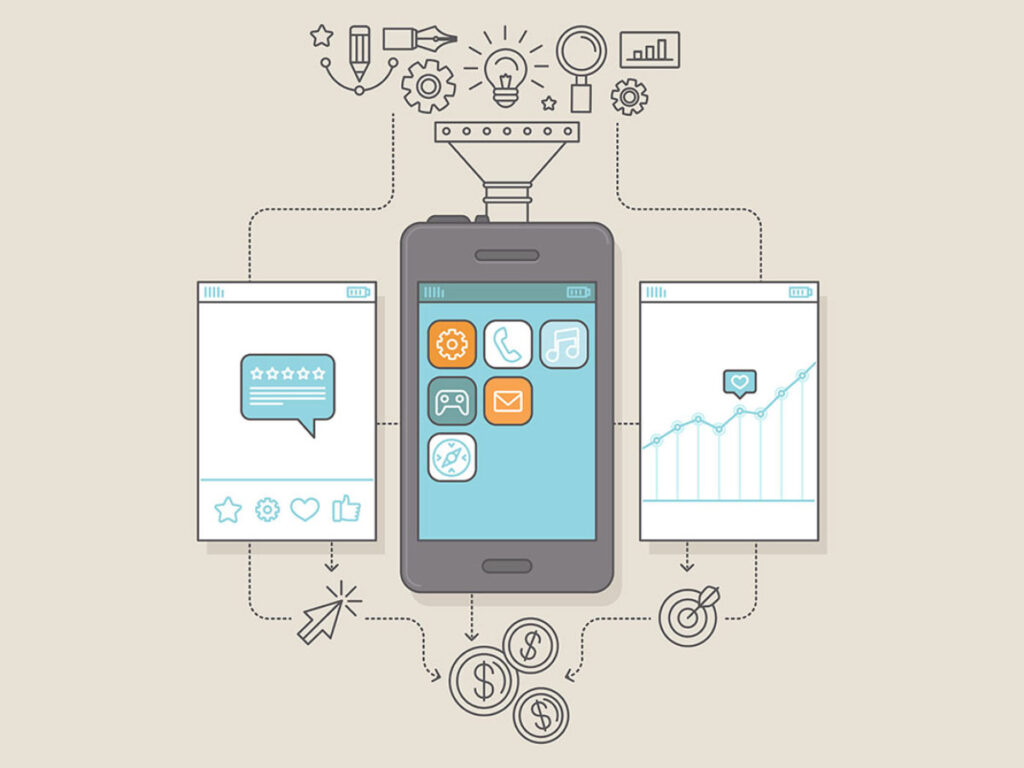
This image is property of buildfire.com.
5. Sponsorships and Partnerships
5.1. Collaborating with brands and influencers
One lucrative monetization approach is collaborating with brands and influencers to promote their products or services within the app. By leveraging their existing user base and unique app experience, app owners can attract sponsorships or partnerships with relevant organizations and individuals. These collaborations can range from integrating branded content or advertisements within the app to co-developing exclusive features or experiences with the sponsoring brand or influencer.
5.2. Promoting products or services within the app
App owners can generate revenue through sponsorships and partnerships by promoting products or services directly within the app. This can include displaying sponsored content, featuring sponsored listings or recommendations, or offering exclusive discounts or deals to users. By aligning the promoted products or services with the app’s target audience and providing genuine value to users, app owners can create mutually beneficial partnerships that generate revenue while enhancing the user experience.
5.3. Sponsored content and native advertising
Sponsored content and native advertising are effective strategies for integrating promotional material seamlessly within the app’s content. Sponsored content involves creating branded articles, videos, or other forms of media that provide value to users while subtly promoting a sponsoring brand or product. Native advertising, on the other hand, involves designing advertisements to match the app’s visual and functional style, making them appear native and non-disruptive. These strategies help maintain the app’s user experience while monetizing through sponsorships and partnerships.
5.4. Benefits and challenges of sponsorships and partnerships
Sponsorships and partnerships offer several benefits for app owners, including additional revenue streams, enhanced user engagement through branded experiences, and the opportunity to leverage the reputation or influence of the sponsoring brand or influencer. However, there are also challenges to consider, such as finding suitable sponsors or partners that align with the app’s values and target audience. Additionally, maintaining a balance between promotional content and the app’s core functionalities to avoid overwhelming or alienating users is crucial for maintaining user satisfaction.
6. Data Monetization
6.1. Collecting and analyzing user data
Data monetization involves collecting and analyzing user data to generate insights that can be sold or utilized for targeted advertising and personalized experiences. App owners can collect various types of data, including user demographics, preferences, behavior patterns, and device usage statistics. By implementing analytics tools, app owners can gain valuable insights into user engagement, identify trends, and optimize their app’s performance and monetization strategies.
6.2. Anonymization techniques and privacy considerations
Protecting user privacy is essential when monetizing through data. App owners must implement anonymization techniques that remove personally identifiable information and store user data securely. By respecting user privacy and adhering to data protection regulations, app owners can build trust with their users, which is crucial for the sustained success of data monetization strategies.
6.3. Selling aggregated and anonymized data
Once user data is anonymized and aggregated, app owners can sell it to third-party companies or advertisers that are interested in leveraging this data for market research, targeted advertising, or product development. The data can provide valuable insights into user preferences, behavior, or market trends, enabling businesses to make informed decisions and tailor their offerings to specific user segments.
6.4. Opportunities and risks of data monetization
Data monetization offers significant opportunities for app owners to generate revenue beyond traditional monetization methods. By leveraging user data, app owners can provide personalized experiences, drive targeted advertising, and gain valuable market insights. However, there are risks associated with data monetization, such as potential breaches or misuse of user data, which can lead to reputational damage. Implementing robust data security measures, obtaining user consent for data collection, and being transparent about data usage are crucial in mitigating these risks.
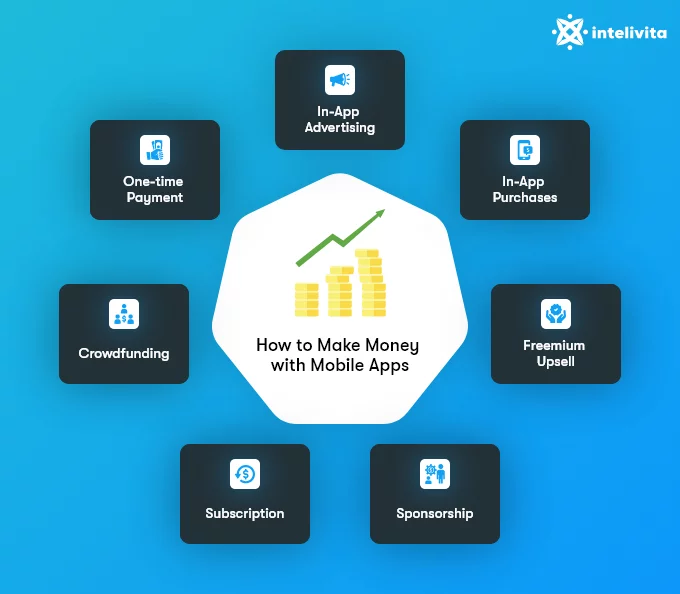
This image is property of www.intelivita.com.
7. Crowdfunding and Donations
7.1. Asking for donations from app users
App owners can ask for donations from their app users as a way to generate revenue. This can be done by implementing a donation feature within the app, allowing users to contribute voluntarily to support the app’s development or maintenance. Utilizing persuasive messaging and highlighting the app’s value and impact on users’ lives can encourage users to contribute and show their appreciation for the app.
7.2. Crowdfunding campaigns for app development or enhancements
Crowdfunding campaigns offer a more structured approach to seek financial support from app users. App owners can create crowdfunding campaigns on platforms like Kickstarter or Indiegogo, where they set a funding goal and offer different tiers of rewards or perks to backers. By showcasing the app’s potential or highlighting upcoming enhancements, app owners can attract backers who believe in the app’s value and are willing to financially support its development.
7.3. Offering exclusive perks or rewards to donors
To incentivize users to make donations or participate in crowdfunding campaigns, app owners can offer exclusive perks or rewards to donors. These can include early access to new features or content, special badges or recognition within the app, or personalized thank-you messages. By providing tangible benefits, app owners can increase user motivation to contribute and strengthen the relationship between the app and its users.
7.4. Best practices for successful crowdfunding
Successful crowdfunding requires careful planning and execution. App owners should create a compelling campaign, clearly communicating the app’s value proposition and goals to potential backers. Setting realistic funding goals and offering attractive rewards at different donation levels can motivate users to contribute. Regularly updating backers on the campaign’s progress and expressing gratitude for their support is key to nurturing a strong and loyal community of app users.
8. Licensing and White Labeling
8.1. Licensing app technology to other businesses
App owners can generate revenue by licensing their app technology to other businesses. This involves allowing other companies to use the app’s underlying technology, features, or functionalities in their own branded apps. Licensing agreements can range from one-time payments to ongoing royalties, depending on the terms negotiated between the app owner and the licensee. This approach allows app owners to monetize their app’s technology beyond their own user base.
8.2. Creating white-label versions of the app
Creating white-label versions of the app involves customizing and rebranding the app for other businesses to use as their own. App owners can offer white-label solutions to companies that want to enter the app market but lack the resources or expertise to build their own app from scratch. This can include custom branding, design modifications, or adding additional features tailored to the specific needs of the client. In exchange for white-label solutions, app owners can charge licensing fees or revenue-sharing agreements.
8.3. Rebranding and customization opportunities
The licensing and white-labeling approach provides opportunities for app owners to rebrand and customize their app’s technology for different industries or markets. By adapting the app’s features or functionalities to specific business requirements, app owners can expand their revenue streams by catering to diverse client needs. This approach also allows app owners to leverage their expertise and technology across multiple industries, maximizing the app’s potential for monetization.
8.4. Pros and cons of licensing and white labeling
Licensing and white-labeling strategies offer several advantages for app owners. They enable app owners to generate revenue by leveraging their existing technology and expertise, without solely relying on the app’s user base. These strategies also provide the opportunity to reach new markets and industries by customizing the app’s technology to suit diverse client needs. However, licensing and white-labeling require careful management and quality control to maintain consistency and ensure customer satisfaction across different branded versions of the app.
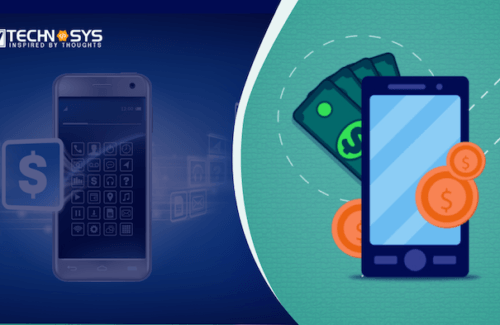
This image is property of www.businessofapps.com.
9. Affiliate Marketing
9.1. Integrating affiliate marketing into the app
App owners can monetize their apps through affiliate marketing by promoting relevant products or services within the app. By partnering with relevant businesses or websites, app owners can earn a commission on referred sales or leads. Integration of affiliate marketing can be done through in-app banners, links, or dedicated sections that highlight recommended products or services. This monetization strategy capitalizes on the app’s user base and their potential interest in related offerings.
9.2. Partnering with relevant businesses and websites
Successful affiliate marketing requires partnering with relevant businesses or websites that align with the app’s target audience and niche. By selecting partners that offer products or services complementary to the app’s core functionalities or user needs, app owners can increase the likelihood of generating conversions and earning commissions. Collaborating with reputable brands or websites also enhances user trust and credibility, which is vital for a successful affiliate marketing strategy.
9.3. Earning commission on referred sales or leads
App owners can earn a commission on referred sales or leads through affiliate marketing. By integrating tracking mechanisms, app owners can attribute sales or leads to specific app users and receive a commission when those users make a purchase or take a desired action. Commission structures can vary, including fixed amounts, percentage-based commissions, or tiered commission structures based on performance. Earning commissions through affiliate marketing allows app owners to monetize their app’s user base while adding value through relevant product recommendations.
9.4. Tips for effective affiliate marketing
To effectively monetize through affiliate marketing, app owners should consider a few key tips. Firstly, thorough research and selection of relevant affiliate partners is crucial. App owners should also focus on providing high-quality and genuine product recommendations or reviews that match the app’s user experience and expectations. Transparently disclosing affiliate relationships and being honest in all promotional content is essential for maintaining user trust. Regularly analyzing and optimizing affiliate performance metrics, such as click-through rates and conversion rates, can help identify opportunities for improvement and maximize revenue potential.
10. App Store Optimization and App Sales
10.1. Optimizing the app store listing for increased visibility
App store optimization (ASO) involves optimizing the app’s listing in app stores to improve discoverability and increase organic downloads. App owners can optimize various elements of the app store listing, including the app’s title, description, keywords, and screenshots. By using relevant keywords, highlighting the app’s unique features or benefits, and showcasing compelling visuals, app owners can improve the app’s visibility in search results, leading to more downloads and potential revenue generation.
10.2. Pricing strategies for app sales
App owners can generate revenue by selling their app as a paid download. When setting the price for the app, app owners should consider factors such as the app’s value proposition, competition, niche, and target audience’s willingness to pay. Pricing strategies can include offering introductory pricing, discounts, or bundle deals. Regularly monitoring market trends and adjusting pricing accordingly can help optimize revenue generation while ensuring the app remains competitive in the app market.
10.3. Promotions and limited-time offers
Promotions and limited-time offers can effectively stimulate app sales and revenue generation. App owners can run limited-time price reductions or offer exclusive in-app content or features to incentivize users to download or purchase the app. Creating a sense of urgency and exclusivity through time-limited promotions can drive conversions and increase revenue. Additionally, collaborating with app store editors and influencers to feature the app in prominent placements or promotions can also boost visibility and downloads.
10.4. Best practices for app store optimization
To optimize the app store presence successfully, app owners should follow best practices for app store optimization. Conducting thorough keyword research to select relevant and high-volume keywords is essential. Crafting a compelling and concise app description that highlights the app’s unique selling points and benefits is crucial for attracting potential users. Utilizing high-quality screenshots and app previews that showcase the app’s key features or user experience can significantly impact conversion rates. Regularly monitoring and analyzing app store analytics, such as impressions, click-through rates, and conversion rates, can help app owners refine their ASO strategies and improve the app’s overall performance in the app store.
In conclusion, app owners have various monetization strategies at their disposal to generate revenue for their apps. In-app purchases, advertising, subscription models, freemium models, sponsorships and partnerships, data monetization, crowdfunding and donations, licensing and white labeling, affiliate marketing, and app store optimization and app sales are all viable ways to monetize apps effectively. The key is for app owners to understand their target audience, app genre, and competition to select the most suitable monetization strategies and implement them strategically to maximize revenue potential.
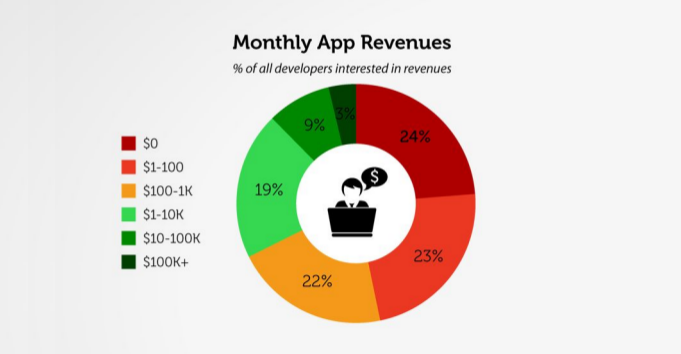
This image is property of blog.mobiversal.com.
